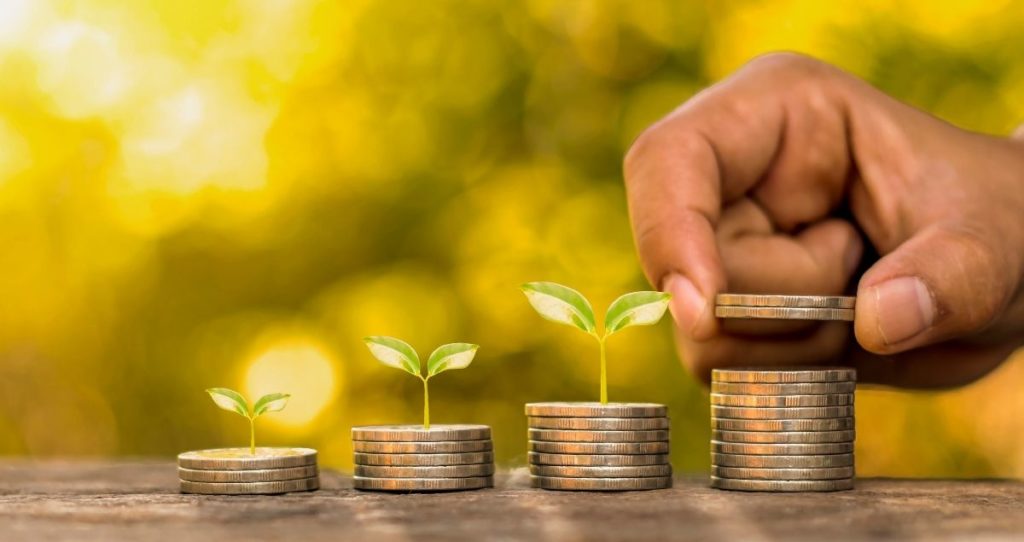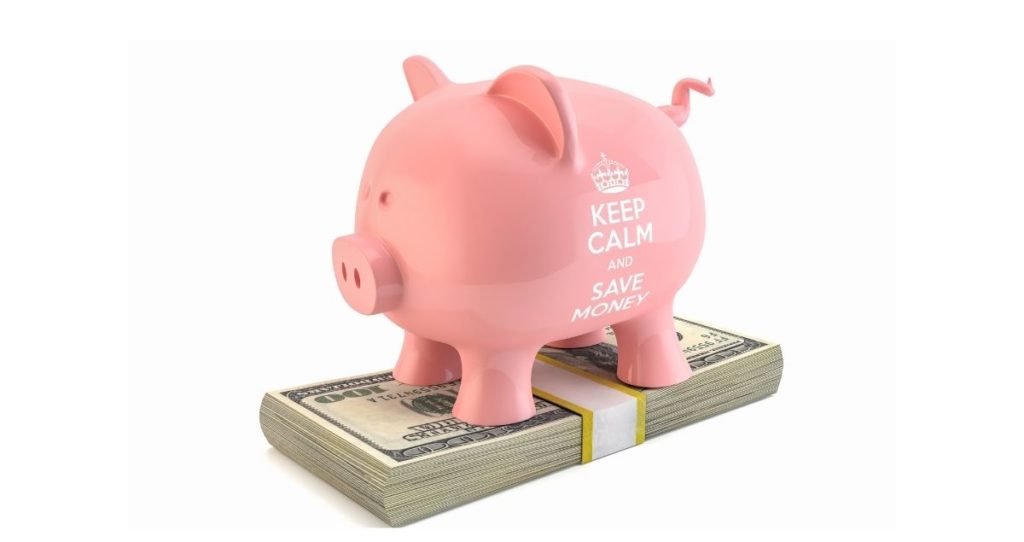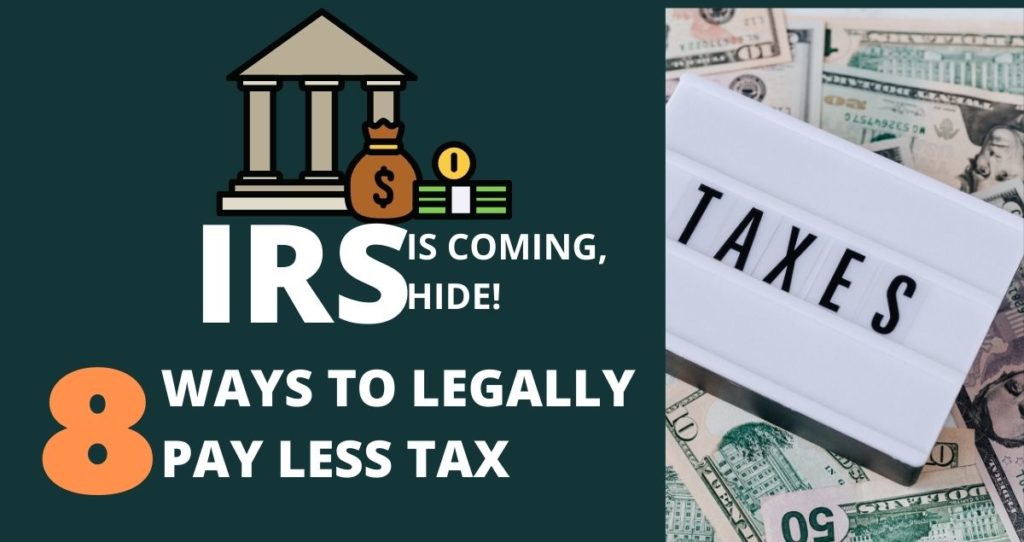Making the right choice with your hard-earned money can sometimes be challenging. Like everyone else, you are probably wondering if you should put your money in a savings account for the sake of safety and earn a low-interest rate or risk it all for competitive rates through investing. Should you put your money in a high-yield savings account and hope to get rich someday or should you invest your money instead? This article will walk you through the details of a high-yield savings account vs. investing and which one to pick given your circumstances to maximize your return on investment.
Whether you’re a seasoned saver or a newbie investor, this comprehensive guide is all you need to get started.
Summary of this article
If you want to save for emergencies, a car purchase, a vacation, a down payment on a house, or any other short-term financial goal, put your money in a high-yield savings account. High-yield savings accounts are relatively safer than investing due to FDIC and NCUA insurance, they are less volatile and offer higher returns than traditional savings accounts. Additionally, high-yield savings accounts are liquid-meaning you can access your funds as needed. But, these accounts are not good for wealth-building and long-term saving goals since their rates cannot keep up with inflation and do not come with tax benefits.
If you want higher returns and long-term growth and can tolerate risk and volatility, investing your money will be the best choice. Investing yields a higher return than high-yield savings accounts. For example, if you invest in stocks, index funds, ETFs, and real estate, your return will be much higher than earnings from a high-yield savings account. The same returns will also beat inflation which is essential to building wealth and preserving your purchasing power.
Additionally, investing comes with tax benefits that can help you reach your financial goals faster. For example, if you invest in retirement plans such as 401(k) and individual retirement accounts(IRA), you will get direct or deferred tax benefits. Meaning, you can either pay taxes now and take distributions tax-free during retirement or avoid tax now and pay tax when you are taking distributions. Additionally, long-term investing allows you to pay capital gains tax which is lower instead of the ordinary income tax you pay on interest earned on a high-yield savings account. On the flip side, investing comes with high volatility and the risk of losing money.
What is investing?
Investing, as a term, can often evoke images of Wall Street traders, stock tickers scrolling across a screen, and complex financial jargon. But at its core, investing is simply a way to put your money to work to generate a return. It’s a way to grow your wealth and potentially achieve your financial goals.
When you invest, you are essentially buying assets such as stocks, bonds, mutual funds, or real estate with the expectation that their value will increase over time. By carefully selecting the right mix of investments and regularly contributing to your portfolio, you allow yourself to benefit from the power of compounding and potentially earn higher returns than what a high-yield savings account can offer.
A common investing strategy for millions of people is to put their money into retirement accounts such as 401(k)s and individual retirement accounts(IRA) due to their tax benefits.
An alternative to investing in retirement involves buying different assets such as bonds, stocks, mutual funds, REITs, real estate, and Index Funds. With these types of investments, you will benefit through interest payments, dividend payout, or appreciation of the assets.
You might also like: Dividend stocks: What are they and how to invest in them
Investing comes with risks
While investing sounds sexy and rewarding, it also comes with risks. The value of your investments can fluctuate, and there is always the potential for loss. That’s why it’s important to diversify your portfolio. Diversification involves spreading your investments across different asset classes and industries to mitigate risk. Additionally, staying informed about market trends, economic indicators, and the performance of individual investments is crucial in minimizing your risk and maximizing your returns.
Questions to answer before investing
The key to successful investing lies in understanding your risk tolerance, time horizon, and investment goals. Are you looking for short-term gains or are you in it for the long haul? Are you comfortable with the potential volatility of the stock market, or would you prefer a more conservative approach? These are the types of questions you need to ask yourself before embarking on your investment journey.
What is a high-yield savings account?
A high-yield savings account is a type of banking product that offers a higher interest rate compared to traditional savings accounts. The “high yield” in its name refers to the elevated interest rate it provides, which can be significantly higher than the average rate you would earn in a regular savings account. While the specific interest rate offered may vary depending on the financial institution, high-yield savings accounts generally provide a rate that is several times higher than the national average rate on deposit accounts.
Just like a normal savings account, you will still have access to your funds at any time which makes a high-yield savings account a perfect option for emergency funds. Unlike investing where you are subjected to risks, high-yield savings accounts are protected by the Federal Deposit Insurance Corporation (FDIC) or the National Credit Union Administration(NCUA) up to $250,000 per account. This means that even if the bank was to fail, you will still get some or all your money back up to the above limit.
You might also like: Should you invest your emergency fund for better returns?
High-yield savings accounts are not the best options for wealth building
The interest you earn on a high-yield savings account is relatively modest compared to the potential returns from investing in the stock market or other investment options. While high-yield savings accounts can be a suitable choice for short-term goals or emergency funds, they are not the best option for long-term savings and wealth building.
Difference between high-yield savings account vs. investing
Even if you can earn a return from a high-yield savings account and investing, they are fundamentally different in terms of risk, rewards, and protection against inflation.
Risk and rewards
One of the most important aspects of investing is the balance between risk and rewards. Safer financial products such as deposit accounts come with lower returns while riskier products and assets come with the potential for higher returns.
Let’s examine how this concept applies to a high-yield savings account vs. investing.
When considering the difference between a high-yield savings account and investing, you must examine the varying levels of risk and potential for growth. While high-yield savings accounts provide a relatively stable and secure option for preserving capital, they come with limited growth potential. The interest rates offered by these accounts are often influenced by market conditions and can fluctuate over time.
Due to the insurance from FDIC for bank accounts and NCUA for credit unions, high-yield savings accounts are considered risk-free. In case your bank goes out of business, your deposit and accrued interest will be reimbursed to you up to $250,000.
Investing, on the other hand, involves allocating capital into various financial instruments such as stocks, bonds, or mutual funds to generate higher returns. This approach carries a high level of risk as the value of your investments can experience volatility in the short term. For the long term, however, the potential rewards from investing can be significantly greater than the interest you earn from a high-yield savings account.
If you have invested in a financially troubled brokerage company that is a member of the Securities Investor Protection Corporation (SIPC), your account will be protected up to $500,000, which includes a $250,000 limit for cash.
High-yield savings account vs. investing against inflation
Another important distinction between high-yield savings accounts and investing involves their performance against inflation protection. Inflation erodes the purchasing power of money over time, and its impact on high-yield savings accounts can be significant. The interest rates offered by these accounts may not keep up with inflation, leading to a decrease in the real value of savings.
Investing, on the other hand, provides an opportunity to potentially outpace inflation and generate returns that can help preserve and grow wealth over time. By adopting a long-term investment strategy and diversifying across different assets, you can mitigate the effects of inflation and aim for higher growth.
Tax implication
As an investor, you should worry about tax as much as you worry about your return on investment. Tax can eat up most of your returns and negatively affect the rate at which you grow your portfolio. When comparing investing vs. high-yield savings accounts there are differences on how your earnings are taxed. When you hold an investment for more than one year, you pay a capital gain tax which is lower than ordinary income tax. If you sell your investment in less than one year, your capital gains will be taxed as ordinary income.
On the flip side, the interest you earn on a high-yield savings account is taxed as ordinary income.
You might like: 8 ways to avoid capital gains tax on investment
The benefits and limitations of a high-yield savings account
If you are considering a high-yield savings account over investing, you might want to explore its pros and cons before opening an account. Let’s explore what you should expect when you open a high-yield savings account.
Pros of high-yield savings account
- You can easily access your money in a savings account and make extra deposits
- High-yield savings accounts pay higher rates compared to traditional savings accounts
- Your money is protected by either FDIC or NCUA up to $250,000
- Your account doesn’t fluctuate in response to market fluctuation
- The interest rate on a high-yield savings account does not mimic changes in the market
- High-yield savings accounts are best for emergency funds and short-term saving goals
Drawbacks of high-yield savings accounts
- High-yield savings accounts rates are still not enough to keep beat with the inflation rate meaning you will lose purchasing power over time
- You pay income tax on the interest you earn from your savings account
- You will have limitations to how many withdrawals you can make per month usually up to 6 withdrawals
- Earnings from a high-yield savings account are limited and they are much lower compared to what you would get from investing
- You earn a variable interest rate meaning your earning can go up and down due to changes in deposit accounts’ rates
- You cannot build wealth with a high-yield savings account alone
The potential gains and risks of investing
Investing often comes with the opportunity for higher returns that surpass the gains from high-yield savings accounts. By allocating funds to well-performing investments, you can potentially experience substantial growth in your portfolio over time. This growth can be significant especially when investing in stocks and stock-based assets as companies have the potential to increase in value and generate substantial returns.
High returns from investing come with risks that you normally don’t see in high-yield savings accounts. For example, as an investor, you can easily lose your money from picking bad investments and many investment options come with fees and commissions. Savings accounts, on the other hand, are considered safer due to FDIC and NCUA insurance of up to $250,000 and they do not have commissions. Fees on these accounts, if any, are also minimal.
Benefits of investing instead of saving money in a high-yield savings account
- Investing comes with high returns compared to high-yield savings accounts
- There are many investment options to choose from
- Investing returns beat the inflation rate
- You pay capital gains tax instead of ordinary income tax on ROI from long-term investments
- You can tail your investment to your needs and financial situations
- Investing in retirement accounts also comes with direct and indirect tax savings
Potential drawbacks of investing your money instead of saving it
- You pay commission and fees
- Investing comes with high volatility, especially when you invest in stocks, stock-based funds, and similar assets
- The risk of losing money is high
- Your account might not be liquid-meaning you cannot just withdraw money any time without paying an early withdrawal penalty
- You are not in control of your returns
Should you put your money in a high-yield savings account or invest it?
Put your money in a high-yield savings account if you want a reliable and risk-free option to grow your money without exposing it to high volatility. You can also put your money in the account if you are saving for emergencies or a financial goal such as a down payment on a home. By putting your money in a high-yield savings account, you will earn higher interest, maintain access to your funds, and preserve the principal.
If you want higher returns and long-term growth and can tolerate risk and volatility investing your money will be the best choice.
By putting your money into stocks, bonds, mutual funds, or real estate, you can take advantage of the power of compounding and potentially outpace inflation. Investing can be particularly appealing for those with long-term financial goals, such as saving for retirement or funding a child’s education.
Don’t forget your financial goals
Understanding what you want to achieve with your money is critical in making the right decision. Whether it’s buying a house, starting a business, or securing a comfortable retirement, aligning your investment strategy with your goals will help guide you toward the most suitable choice.
For example, if you are saving for retirement, it will be best to put your money in retirement savings accounts such as 401(k) plans, insurance policies, and individual retirement accounts. This strategy will allow you to maximize your return on investment and take advantage of compounding interest on your account which is a faster way to grow wealth and achieve financial independence. Additionally, retirement accounts come with tax benefits that act as an extra boost to your wealth-building journey.
On the other hand, if you want to save for emergencies, a car purchase, a vacation, or a down payment on a house, put money in a high-yield savings account. This is because the main purpose of the account is to preserve the principal while earning you a small return. In order words, you cannot afford to lose that money as it is planned for a specific financial goal.
You might also like: How to open a Roth IRA: Create a Roth IRA in 6 steps
Is there anything better than a high-yield savings account?
While high-yield savings accounts offer security and stability, they may not be the ideal choice for everyone. A good alternative to high-yield savings accounts is a certificate of deposit or CDs for short. CDs come with fixed interest rates that are higher than other deposit accounts such as savings accounts and money market accounts.
The downside of CDs is that you cannot make withdrawals from your CD account until maturity. Doing so will result in an early CD withdrawal penalty which is usually several months or days of interest on your funds. For example, your banks can charge you 6 months of interest on a 12-month CD if you take money out of your CD early. At maturity, you get your original deposit together with accrued interest.
Related: How to open a CD account: A Step-by-step guide
More saving tips
What is a high-yield savings account?
Live below your means with these 11 simple tips






